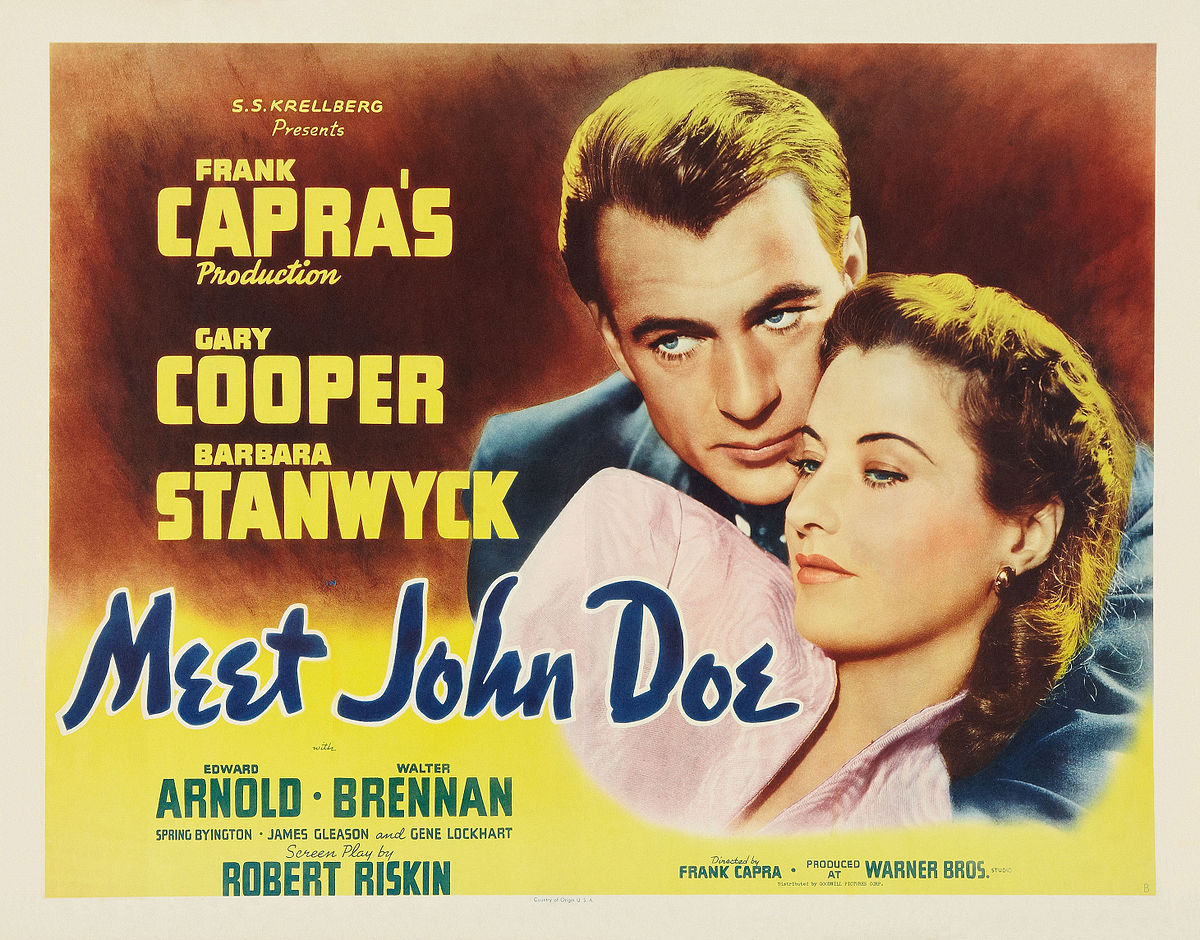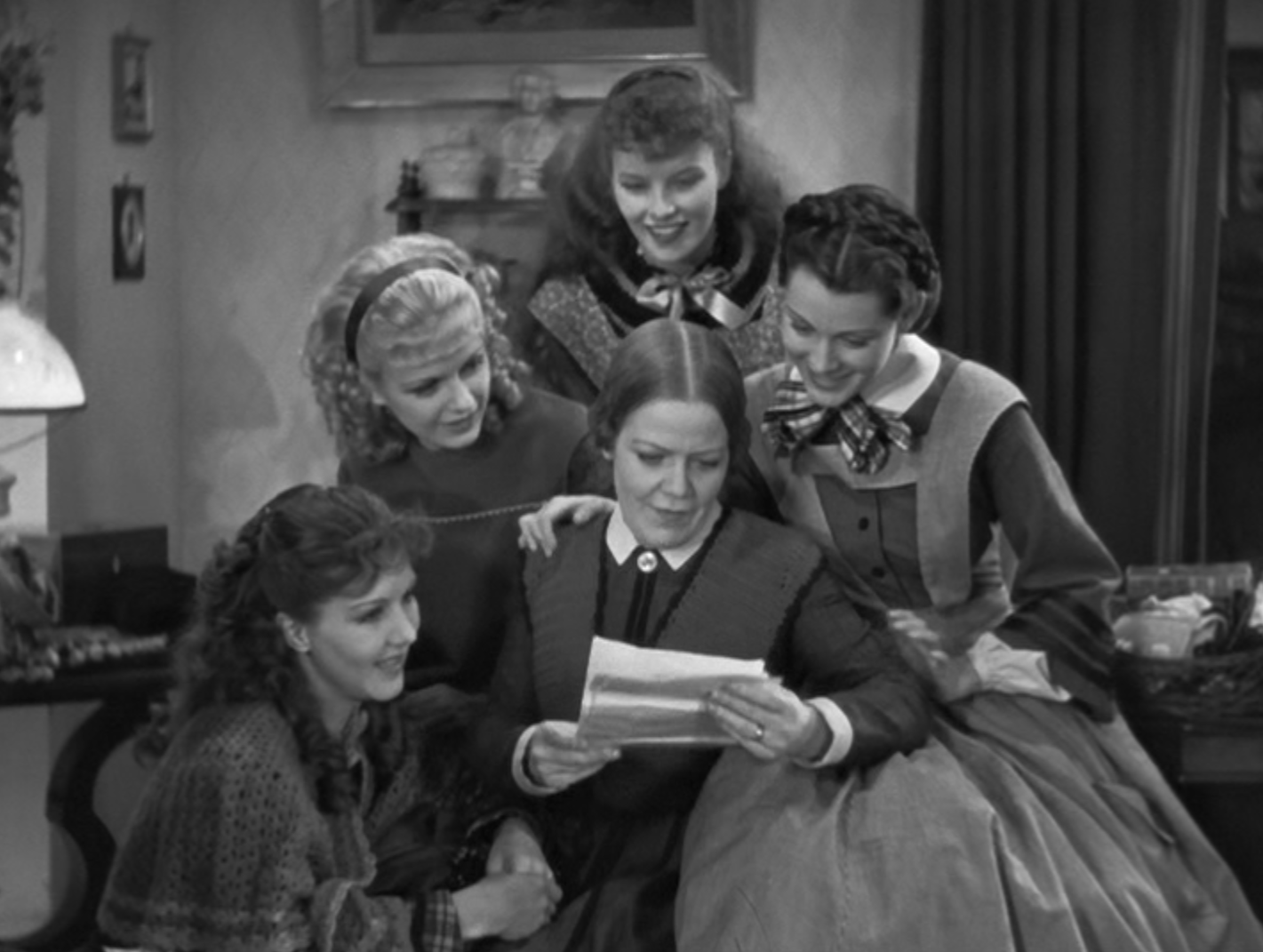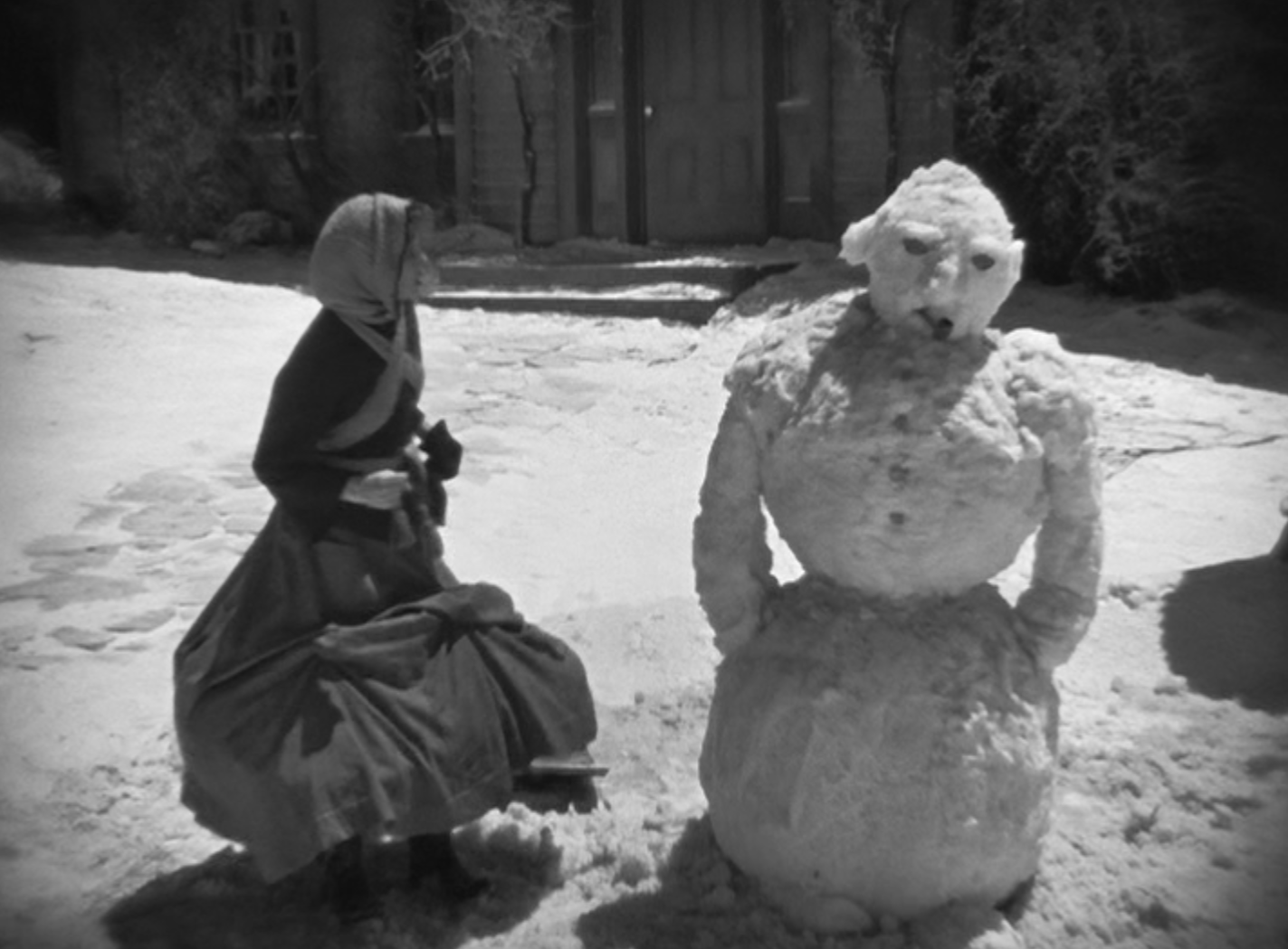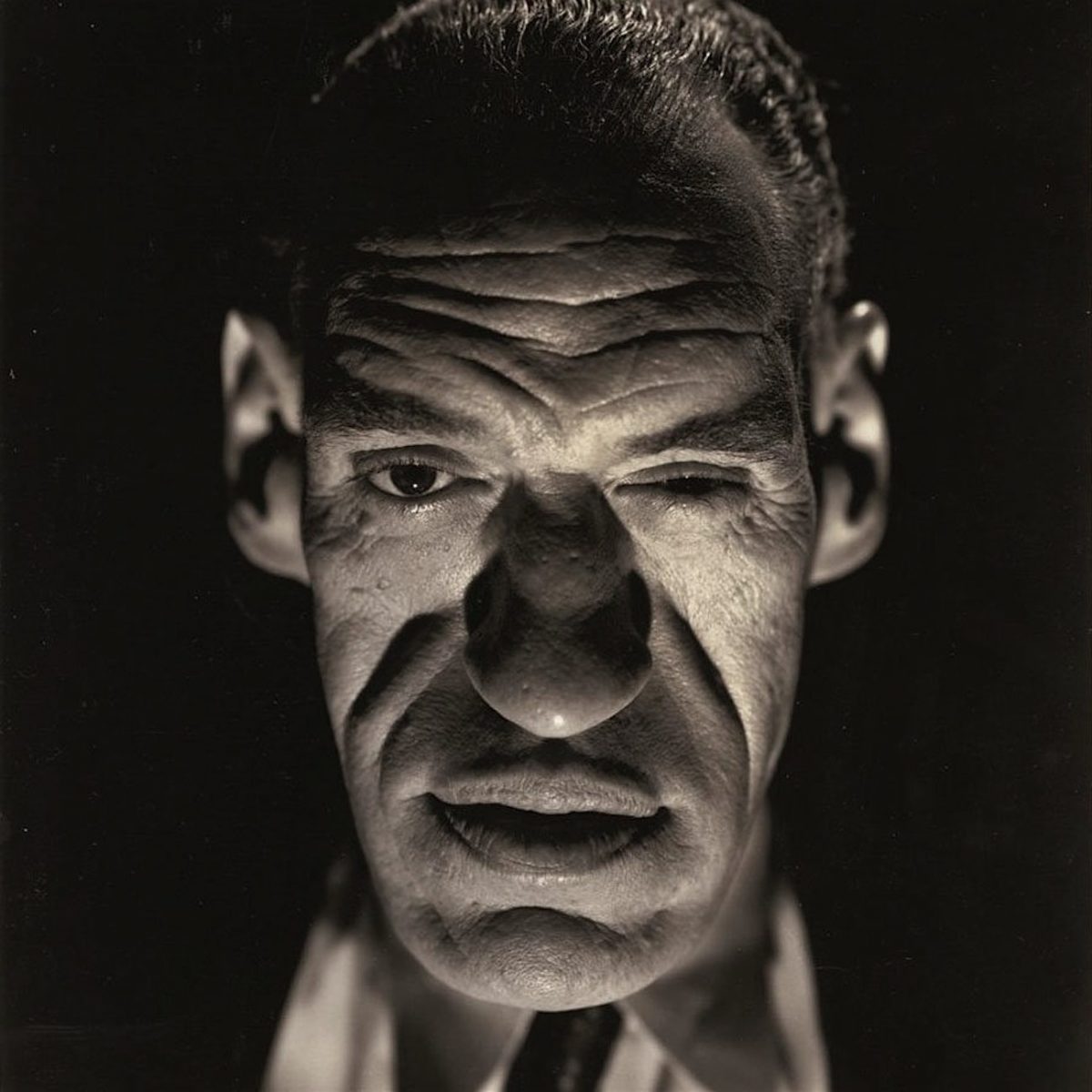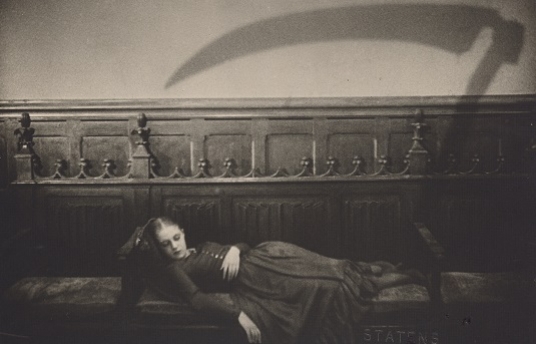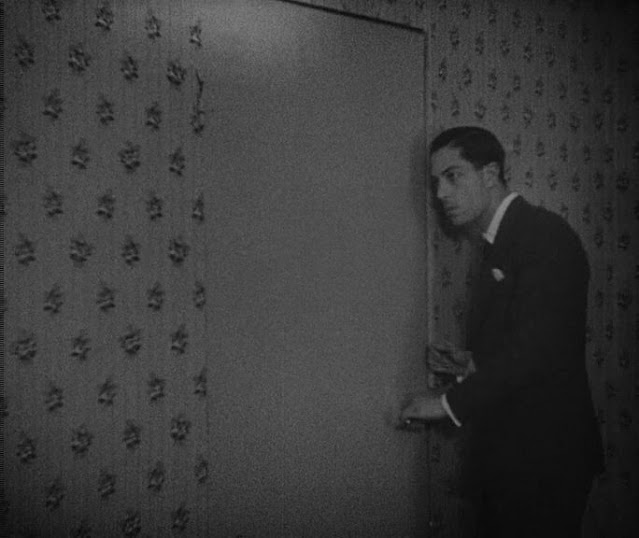or reload the browser
Pages
▼
Friday, December 25, 2020
Thursday, December 24, 2020
Merry Christmas Triple Feature: Christmas Comes But Once a Year (1936) Jack Frost (1934) Santa's Surprise (1947)
or reload the browser
Monday, December 21, 2020
#ManCrushMonday #ChristmasEdition Dennis Morgan as Jefferson Jones in "Christmas in Connecticut" (1945)
Jefferson Jones is injured while overseas during WW2 and while on a safety raft, he imagines his ideal dinner to another survivor. Placed in a hospital for his injuries, Jones starts reading Elizabeth Lane's (Barbara Stanwyck) articles about being a cook and mother on a farm in Connecticut. A nurse who starts falling for Jones discovers how enamored he is with the writing and reaches out to the publisher Alexander Yardley (Sydney Greenstreet). What the magazine publisher doesn't know is that everything Elizabeth writes about is a lie, but is willing to put on the charade for Jones to keep her job.
While on a Connecticut farm provided by who Jones thinks is Elizabeth's husband, he repeatedly finds himself in romantic situations and slowly starts falling for who he thinks is a married woman even though he too is engaged to the nurse who started this whole mess.
(P.S. H A P P Y Y U L E, everyone!)
or reload the browser
or reload the browser
Saturday, December 12, 2020
TCM Movie: Meet John Doe (1941)
Columbia producer Harry Cohn hired Frank Capra and Robert Riskin in 1931 for the Barbara Stanwyck vehicle "The Miracle Woman." Riskin and Capra had been collaborators ever since, resulting in 29 Academy Awards over seven years, including three for Capra and one for Riskin. But a war started brewing over in Europe and their often fraught personal relationship (Capra being a Republican and Riskin liberal) started interfering with a much more harmonious working relationship. The both of them were starting to get drained from the lack of "creative autonomy available in the studio system" and wanted to create their own production company despite their political differences.
"By October 1939, Riskin had returned to Hollywood [from Europe], and he and Capra made their play for freedom. They joined with leading Hollywood attorney Loyd Wright in filing articles of incorporation with the secretary of state for California for $1 million. The title of the new company was Frank Capra Productions; it fixed its capital at one hundred thousand shares of stock without par value, and one hundred thousand shares at $10 each. The company moved into the offices that had been vacated by William Randolph Hearst's company, Cosmopolitan Pictures, on the Warner Brothers lot, and leased stage room and storage while at the same time financing operating costs." (In Capra 's Shadow - Google Books)
"Capra and Riskin now had their own company and were free, in theory at least, to make their own decisions. The company's letterhead made the equity of the relationship very clear. In the top left-hand corner was Capra's name; in the top right-hand corner, Riskin's. Symbolically, at least, this was a joint venture, although the financial distribution of stock within the company told another story. 65 percent of the company was to be owned by Capra; Riskin took the other 35 percent. All they needed now was a first story and a deal for distribution of the movies they wanted to make."
Richard Connell's short story "A Reputation" was published in 1922's Century Magazine (August's Apes and Angels Edition) and Connell started adapting it with Hollywood screenwriter Robert Presnell. While his most recent collaboration, Samuel Goldwyn Production's "The Real Glory" (1939) was in production, Presnell received help from co-screenwriter Jo Swerling who also attempted to adapt Connell's short story. Swerling left his draft unfinished, titling it "The World Is an Eightball." Riskin was given both treatments by Swerling including the original "A Reputation" and gave them to Capra while he was doing publicity for "Mr. Smith Goes to Washington" (1939) in the fall that same year. He read them on the train back to the West Coast and took copious notes the entire time. Riskin would end up attempting to consolidate all three stories into a re-titled "Meet John Doe." "According to a pre-production news item, the title was changed to Meet John Doe in order to avoid giving the impression that the film was based on a biography." (Meet John Doe (1941) - Turner Classic Movies)
"They got control over virtually all aspects of shooting, as well as the final cut. In fact, some within Warner Brothers felt the deal was too good; a renegotiated contact in early 1941 for distribution of the picture under the Warner Brothers banner gave the studio 25 percent of the net revenue once the picture grossed $2 million. The deal became something of an albatross to the partners, and there turned out to be little profit in the venture for such a small company, despite the film's going on to make money at the box office." (In Capra 's Shadow - Google Books)
Capra had known from the get-go he was going to cast Gary Cooper as Long John Wiloughby/John Doe after having already worked with him on "Mr. Deeds Goes to Town" (1936). "I had but one choice: Cooper. I wouldn't have made the picture without him. But I had no script for him to read when I asked him to play the part. Surprisingly he said: "It's okay, Frank. I don't need a script." But the role that would end up going to Stanwyck was initially given to Ann Sheridan before Warner Brothers turned it down due to a contract dispute as well as Olivia de Havilland. Stanwyck was cast only a month before shooting began, saying yes to the experience of solely working with Capra. "Moreover, all the other star names in my first-choice dream cast [...] were available and signed up for the film. And, as with Cooper, they all accepted their roles before reading the script--which is about the highest compliment a director can be paid." (Capra. The name above the title; an autobiography : Capra, Frank . . ..)
Shooting began August 7, 1940, the shooting schedule slated at 57 days but finished on December 9th. Exteriors were filmed at Gilmore Field and Griffith Park in Los Angeles; Pasadena, CA; and a Los Angeles icehouse. Capra and Riskin spent the summer attempting to write the script but especially the final reel of the movie. Capra even mortgaged his home to finance the film; the fact of a writer and director putting their own money into a film being considered ""brash," "reckless"" as well as refusing to give out details about the script to the press after having written themselves into a corner and to hold Jack Warner and the Bank of America at bay. Capra even brought in his "friend and severest critic--but also my ace-in-the-hole story constructionist" Myles Connolly and then Jules Furthman. ""Hell, it's simple," he declared. "You guys can't find an ending to your story because you got no story in the first place," (Capra. The name above the title; an autobiography : Capra, Frank . . ..) "but writer and director put off this closure as unpalatable for as long as possible." (In Capra 's Shadow - Google Books) Five different endings were constructed.
- The film ends after the convention and Connell's epilogue quote: "Well, boys, you can chalk up another one to the Pontius Pilates."
- John leaps from the top of City Hall and is shown - after his death - cradled in the arms of the Colonel who bemoans: "You poor sucker, you poor sucker."
- After Ann pleads with him and faints (after her expression of love), John decides to abandon his suicidal plan and he carries her out to "start clean" or "start all over again."
- When Ann encourages him not to jump, John is transformed by the Christmas spirit. He offers his Christmas wishes to Norton, who surprisingly converts and orders the Colonel to print the real suicide letter (and the true story) in the newspaper. The Colonel concludes: "Well, looks like I gotta give the heelots one more chance." ("Meet John Doe (1941)")
"Meet John Doe" was previewed multiple times throughout December and into January. "On a visit to New York to negotiate a further distribution package for the picture in January 1941, Riskin told reporters quite candidly that his and Capra's new film would have to be subjected to more test-screenings, a confession that parts of the picture, and certainly the ending were not yet right." (In Capra 's Shadow - Google Books) Capra even admitted later in life that "for seven-eighths of the picture we had a fine, fine thing going for us there; the very end collapsed like a brick sock" and admitted that even he didn't like the fifth endingthat much either.
The film was then released in seven theaters in four major cities on March 12, 1941, but was pulled two days later. "And then--after the film had been playing a couple weeks [...] I received a letter signed "John Doe,"" Capra explained in his autobiography, "It read: " . . . I have seen your film with many different endings . . . all bad, I thought . . . the only thing that can keep John Doe from jumping to his death is the John Does themselves . . . if they ask him." A large bell rang. I called back all the cast and shot Ending Number FIVE!" (Capra. The name above the title; an autobiography : Capra, Frank . . ..) "In addition, Capra cut a few scenes to shorten running tie but also weaken some of the inferences." (In Capra 's Shadow - Google Books)
"Meet John Doe" was released again in April, but this time with a huge campaign from Warner Brothers. "The studio touted it as the "glorious peak of all of the achievements that won them more awards than any other director-writer team." "Warner Brothers pulled no punches in its ingenious selling of the movie, making newspaper mock-ups with John Doe gossip and even challenging people to set up John Doe clubs" but this only "reveal[ed] how far removed this full-scale exploitation of the movie's narrative precepts was from executives' nervous expressions during the making of the picture, and how suspect they were of its contemporary reflection of events. There is, for example, among the collection of documents held about the picture, a file devoted to Meet John Doe's likeness to the moral rearmament movement that had been prominent in Southern California in the previous couple of years. The movie's convention scene, filmed at Wrigley Field, supposedly bore a striking resemblance to the movement's meeting at the Hollywood Bowl in July 1939, a gathering that Capra and Riskin might have attended, although there is no proof." (In Capra 's Shadow - Google Books)
The hits kept coming as "...John Doe" ran in theaters. "An April 1941 letter from attorney Peter J. McCoy stated that authors Robert Shurr and Pat A. Leonard were claiming an infringement of copyright for scenes and story closely related to their play The Stuffed Shirt. In November, [...]a stage play, Washington Jitters, by Dalton Trumbo, had appeared; it was derived from a novel with a character named Chester Wiloughby, Monkey on a Stick by Henry Clune, which had appeared at almost exactly the same time as the film. The insinuation was that Riskin had somehow adopted the character as his own for Meet John Doe, but further communications from within Warner Brothers accused Clune and Trumbo of copying aspects of Capra's earlier Mr. Smith."
In the end, "Meet John Doe" made 2 million in the box office and was a critical success despite all of its behind the scenes problems. John T. McManus's article during the first release for PM's Weekly prophesied this when he "scored the screening as a triumph and indicated that that version of the film was sure to be a success for 1941.""The reviewer who pretends to say where writing ends and directing begins is deluding only himself," The Hollywood Reporter lauded, "It's a brave thing Capra and Riskin do in allowing a character to have his full say, almost without interruption." "For, in spite of a certain prolixity and an ending which is obviously a sop," Bosley Crowther of the New York Times complimented, "this is by far the hardest-hitting and most trenchant picture on the theme of democracy that the Messrs. Capra and Riskin have yet made--and a glowing tribute to the anonymous citizen too. Mr. Capra has produced a film which is eloquent with affection for gentle people, for the plain, unimpressive little people who want reassurance and faith. Many of his camera devices are magnificent in their scope of suggestion, and always he tells his story well, with his customary expert spacing of comedy and serious drama. [...] And his cast is uniformly excellent."
But after only one film, Riskin grew exhausted of writing to please and to the audience's expectations as well as the frustrating post-production process. It didn't help that he also felt Capra had more say in the aesthetic and only highlighting the dialogue than the already established descriptions in his scripts. It may have been his intuition telling him to break it off with Capra or the personal issues or realizing they had nowhere to go creatively anymore and so, Riskin broke his decade-long business partnership in favor of going to London to work for Liberty magazine.
or reload the browser
Friday, December 11, 2020
Disney Double Feature: On Ice (1935) and Donald's Snow Fight (1942)
or reload the browser
Wednesday, December 9, 2020
#WomenDoingAwesomeThings #ChristmasEdition 5 Times When Barbara Stanwyck was the Queen of Christmas
 |
in "Remember the Night" (1940) |
 |
in "My Reputation" (1946) |
 |
in "Stella Dallas" (1937) |
 |
in "Christmas in Connecticut" (1945) |
 |
in "Meet John Doe" (1941) |
Monday, December 7, 2020
#ManCrushMonday #ChristmasEdition Joseph Cotten as Zachary Morgan in "I'll Be Seeing You" (1944)
After being diagnosed with shell shock at a military hospital, Sgt. Zachary Morgan has been placed on a ten-day leave in trying to readjust to daily life. On the train to Pinehill days before Christmas, he meets a beautiful woman (Ginger Rogers) who he is immediately attracted to and believes to be a saleswoman. Instead of being honest, Morgan tells her he's on his way to spend time with his sister for the holidays. They go on a date and see a war movie which triggers Morgan's shell shock and PTSD. The rest of the night doesn't go so well.
With one more date to a nearby lake, Zachary explains himself and finds himself invited to Christmas by Mary's Aunt and Uncle who she is staying with for the holidays. He pays it forward through inviting the Marshalls along with their teenage daughter (Shirley Temple) to a New Year's Eve party at the YMCA where he's staying. While at the party, a U.S. Senator randomly asks Zach's opinion on how soldiers think about the political climate and he replies that every soldier has their own opinions but it clearly riles him up. He walks Mary home and is attacked by a dog while trying his best to fend it off. Before going into her Aunt and Uncle's home, Mary makes a comment that Zach recovered pretty well after having gained confidence.
But minutes after going home that same night, he suffers another relapse, but recovers thinking of Mary's voice. Zachary realizes he's in love with her and goes to talk to her about their future, but Mary hasn't been 100% honest about herself the whole time either.
or reload the browser
Thursday, December 3, 2020
TCM Movie: Lady in the Lake (1947)
Robert Montgomery got his first taste of directing while on location filming John Ford's "They Were Expendable" (1945). Ford had fallen 20 feet off a scaffold and broke his leg near the end of filming and put Montgomery to work directing the PT boat scenes. The move had been a poetic one when Ford upbraided him in front of cast and crew for suggesting a different way to direct a scene earlier in the day. But Ford knew Montgomery could handle directing these scenes having been an actual PT commander at Guadalcanal and Normandy during World War 2, and that gave Montgomery an advantage over "...Expendable" star John Wayne.
The decision gave Montgomery the directing bug and actively convinced MGM to buy the Raymond Chandler's latest novel The Lady in the Lake which they paid $35,000 for. Montgomery also persuaded Chandler to write the screenplay, resulting in a 195-paged screenplay "which is utterly remarkable for how bad it is. Yes, it has great dialogue -- pages and pages of it [...] delivered by characters having nothing to do with the plot [...] A totally unmanageable script from one of Chandler's best books." ("Eddie Muller's intro to "Lady in the Lake" (1947) on TCM Noir Alley")
"Montgomery hired another writer, Steve Fisher and coincidentally Fisher and Chandler were both part of the bull pen at Black Mask magazine in the '30s. In Hollywood, Fisher adopted the same attitude about his craft he had working for the pulps -- make sure everything fits together and don't lose your paycheck on the way to the bank. [...] [Chandler] was insulted that another writer reworked his story which included shifting the action from a hot Los Angeles summer to the Christmas holidays and dropping all the scenes at Little Fawn Lake, the book's best passages. Chandler still demanded he be given screen writing credit until he saw the finished product at which point, he demanded his name be removed. " ("Eddie Muller's intro to "Lady in the Lake" (1947) on TCM Noir Alley")
Robert's personal friend director-screenwriter Delmer Daves was also working on "Dark Passage" at the time and described to his friend how Bogart wouldn't be seen for the first half of the movie, using what Hollywood called "the subjective camera" technique where the audience would see the film through Vincent Parry's eyes. But Jack Warner put the kibosh on the decision and Bogart is seen only a few minutes into the film. The method had not been used since the first few minutes of Rouben Mamoulian's 1931 "Dr. Jekyll and Mr. Hyde." Orson Welles even had been in talks to use "the subjective camera" for an adaptation of Joseph Conrad's Heart of Darkness four years earlier, but RKO couldn't afford the $1 million budget Welles suggested and the idea was scrapped in favor of "Citizen Kane."
"Lady in the Lake is a technician's picture, and as such takes a vital step forward in development of original approaches to screen story-telling," Herb A. Lightman explains in his article "M-G-M Pioneers with Subjective Feature" for the magazine American Cinematographer (1946), Special credit is due the M-G-M camera department, and more specifically to Paul Vogel, A.S.C. Director of Cinematography on this film, for clever handling of the required camera effects. [...]
"Foremost among the many camera problems inherent in the filming of the picture was the unusual amount of camera movement required in order to simulate the active meanderings of detective Marlowe. To accomplish this fluid effect, John Arnold, A.S.C., head of M-G-M's camera department devised an especially mobile camera dolly with sets of independently controlled wheels at either end, much on the order of a fire engine hook-and-ladder. This dolly "walked" through doors, down corridors, and up stairs with great natural facility.
"Fight sequences, in which the detective spars with his assailants and is finally knocked down, demanded an even greater mobility of camera. To meet this need, Arnold designed a special shoulder bracket and brace which he adapted to a standard 400 foot motor-driven Bell & Howell Eyemo. In this way, cinematographer Vogel was able to actually "wear" the camera and spar realistically while doing so. [...] The matter of perspective as highly important in planning the camera approach to "Lady in the Lake." Tests were made with various focal length lenses and it was finally decided that the standard 50 mm. lens gave the most normal perspective. Difficulties relating to depth of field developed when, in certain sequences, it was necessary to show the main character's hands in the foreground of the frame, with strong plot action developing in the background.
"Set lighting, also, presented difficulties not encountered in the average picture. Because the camera had to move so fluidly about the set, very few floor lighting units could be used. Most of the lights had to be mounted overhead, some even being hung by ropes in the center of the set. [...] Summing up the camera problems on the picture, cinematographer Vogel says: "Our biggest headache on a film like this was to accomplish all the required effects without calling the audience's attention to the mechanics of the techniques involved. Everyone working on the picture had to adopt a completely fresh point of view. We had constantly to think in terms of camera."
Even actor-now-director Montgomery was not without his problems. "We had to do a lot of rehearsing," he explained to John Tuska in his book The Detective in Hollywood, "Actors are trained not to look in the camera. I had to overcome all that training. I had a basket installed under the camera and sat there so that, at least, the actors could respond to me, even if they couldn't look directly at me." (Lady in the Lake (1947) - Turner Classic Movies) Montgomery would also record his dialogue in a microphone next to his off-scene director's chair, but in the final dubbing his voice was piped a little louder than the others "in order to make the sound seem closer and more intimate, thus pointing up the subjective effect."
"The Lady in the Lake" finished mid-1946, Montgomery bringing the finished movie into M.G.M. 19 days ahead of schedule. The film was already reviewed by Weekly Variety in November 1946. But M.G.M. executives backed down at the last minute from putting the film in theaters to coincide with the Christmas themes and delayed its release until January 1947 to not "offend" audiences when so high of a percentage included the "family trade." "The Lady in the Lake" premiered at New York City's Capitol Theatre January 23, 1947 but with M.G.M.'s tacked on "happy ending" despite the insisting protestations of both Montgomery and co-star Audrey Totter.
The film earned $1,812,000 in the U.S. and Canada in addition to $845,000 internationally, resulting in a profit of $598,000 and becoming #71 out of the 75 Top Grossers of 1947. T.M.P. of The New York Times lukewarmly reviewed, "This picture is definitely different and affords one a fresh and interesting perspective on a murder mystery. [...] In making the camera an active participant, rather than an off-side reporter, Mr. Montgomery has, however, failed to exploit the full possibilities suggested by this unusual technique. [...] Still, Mr. Montgomery has hit upon a manner for using the camera which most likely still lead to more arresting pictorial effects in the future. Since Raymond Chandler provided the story and Steve Fisher wrote the screen play, one can rest assured that the plot isn't lacking in complications, romantic and otherwise." Newsweek called it "a brilliant tour de force" and Variety describes it having "a novel method of telling the story, in which the camera itself is the protagonist, playing the lead role from the subjective viewpoint of star Robert Montgomery. Idea comes of excellently, transferring what otherwise would have been a fair whodunit into socko screen fare."
Lady in the Lake will be playing on Turner Classic Movies on December 20th at 1 AM CST/2 AM EST
or reload the browser
or reload the browser
Tuesday, December 1, 2020
TCM Movie: "Little Women" (1933)
Both David O. Selznick and George Cukor had already left RKO for M.G.M. in early 1933, but Selznick had one last film in his contract although having left to work under his father-in-law Louis B. Mayer and Cukor seemed to "owe" RKO a picture after his smash hit "A Bill of Divorcement" from the year before. But Louisa May Alcott's novel Little Women had already been floating around the RKO lot in many different drafts and it's possibly speculated that many of them were either updated and/or expanded upon. Selznick didn't appreciate this and one of the first things he did as an uncredited producer was to persuade the RKO executives to maintain the setting from Alcott's novel and to not update the story.
October 1932's Film Daily reported Selznick had initially hired John S. Robertson to direct and George Cukor as writer. But husband and wife writing team (already established silent director-producer) Victor Heerman and (first ever Hollywood script supervisor and inventor of talkie continuity) Sarah Y. Mason ended up with the honor. Katherine Hepburn would later consider Heerman and Mason's script in her biography as "a brilliant script, in my humble opinion. Simple and true and naive but really believable. It was amazing the difference between this script and its predecessors. Mason and Heerman believed the book. So did I. The others didn't. (Hepburn. Me: Stories of My Life. 1991.) Even Cukor would call the script "something quite original for the time. It wasn't slicked up. The construction was very loose, very episodic, like the novel. Things happen, but they're not tied together...the writers believed in the book, they understood its vitality, which is not namby-pamby in any way."
Cukor would find himself directing considering the success of "A Bill of Divorcement" also with the help of Selznick and star Katherine Hepburn despite the fact he had never read the novel before. "Of course I'd heard of it all my life, but it was a story that little girls read ... when I came to read it, I was startled. It's not sentimental or saccharine, but very strong-minded, full of character, and a wonderful picture of New England family life. It's full of that admirable New England sternness, about sacrifice and austerity." (Lambert, Gavin. On Cukor. 1972.)
Katherine Hepburn seemed to be Cukor's only option to play Josephine March. He had been impressed with the 24-year-old's screen test for "...Divorcement" despite Selznick's protestations that she would not be well received by audiences with her looks. But she would end up cast anyway and declared by the Hollywood Reporter as "a new star on the cinema horizon" as well as procuring a life-long friendship with Cukor.
"When I directed Little Women I had to develop a new technique to ensure the best results from the collaboration of Miss Hepburn and myself...a fine actress, Katherine Hepburn is more than a personality. She is a human dynamo. Without meaning to be, and simply because of the vigor of her own mind and the intensity of her attitude toward her own work, she can be, if given the chance, what I would call an artistic bully...I do not say that had I decided to "lie down" to her from the start...a less good picture would have resulted. But a director with a conscience will fight tooth and nail to get the picture as he wants it. Let me hasten to say that Miss Hepburn and I did not fight at all. I confess freely that I used many weapons in dealing with her -simulated rage, ridicule and good-humored cajolery. She has a great sense of humor, and is capable of directing it against herself." (Koszarski, Richard. Hollywood Directors. 1976.)
According to production files, many actresses would test for the March family, including Connie Jones, Helen Mack, Jennie Dark, and Adelyne Doyle tested for Beth; Billie Burke, Phoebe Foster, and Ann Shoemaker were tested for the role of Mrs. March; Leonard Mudie was tested for Mr. March; Howard Wilson and Richard Houghton were tested for Laurie. Edna May Oliver would be cast as Aunt March after Louise Closser Hale passed away and Douglass Montgomery replaced Eric Linden as Laurie. In a more recent interview Cukor would admit to casting Joan Bennett after meeting her at a party where she was somewhat tipsy but found Spring Byington's "Marmee" as "hardly Alcott's "tall stately lady."" (Little Women (1933) - Toronto Film Society)
"Little Women" started production June 28th 1933 and took three months to shoot, its estimated budget coming out at $424,000 out of $1 million with a one-year production schedule with 4,000 employees. Every piece of Ray Moyer's set decoration and Walter Plunkett's costumes would be historically authenticated. Katherine Hepburn even gave Plunkett a photographic tintype of her late maternal grandmother so he could create the dress her grandmother had worn in the picture. Cukor would also state that the March sisters shared costumes to increase the film's realism and consciously avoided making "big scenes" so nothing would call attention to itself.
Former artist and interior designer Hobe Erwin was also hired to oversee the sets and is credited of designing the interiors of the March home after Louisa May Alcott's Massachusetts home, Orchard House. Exteriors were filmed at Lancaster's Lake in Sunland, Providencia Ranch in the Hollywood Hills as well as the Warner Bros.'s Pasadena Ranch. According to the studio files, real snow was used for the winter scenes despite the sweltering 100 degrees. Harry Redmond is also credited for special effects including hand-coloring the fireplaces and candles.
"We had a sound strike when we were shooting the long sequence, when Beth was dying and everyone was weeping--especially me. It was agony. We had to do it over and over again because of sound. Agony. I finally threw up and we had to try again the next day." (Hepburn. Me: Stories of My Life. 1991.)
Cukor's second-billed actress Joan Bennett intentionally chose not to mention her pregnancy to Cukor when she was impulsively cast in "Little Women" by the director. Walter Plunkett had to redesign several of her costumes to conceal while Cukor frequently obscured her pregnancy through blocking and editing.
Filming wrapped September 2nd 1933 and first premiered at New York City's Radio City Music Hall November 16th the same year which would be considered the coldest November 16th for 50 years. 23,073 people attended the first day and broke opening day attendance records, earning over $100,000 in receipts during its first week of release and making RKO a total of $800,000 in profits. 451,801 attended the three week run at Radio City before moving to RKO's Center Theatre where 250,000 attended in four weeks. In domestic rentals, it earned a total of $1,337,000 and $2,000,000 worldwide making "Little Women" the ninth most popular at the U.S. box office for 1933. It would be so successful, the film was re-released in 1938 earning an additional $70,000 in rentals and $49,000 in profit.
"The easy-going fashion in which George Cukor, the director, has set forth the beguiling incidents in pictorial form is so welcome after the stereotyped tales with stuffed shirts," Mordaunt Hall of The New York Times lauded, "It matters not that this chronicle is without a hero, or even a villain for the absence of such worthies, usually extravagantly drawn, causes one to be quite contented to dwell for the moment with human hearts of the old-fashioned days. The film begins in a gentle fashion and slips away smoothly without any forced attempt to help the finish to linger in the minds of the audience." Variety called it "a superbly human document, sombre in tone, stately and slow in movement, but always eloquent in its interpretations."
Little Women will be playing on Turner Classic Movies on December 25th at 6:15 CST/7:15 EST
or reload the browser
or reload the browser
Monday, November 30, 2020
Turner Classic Movies Christmas Schedule 2020
 |
| Bell, Book and Candle (1959) |
Saturday, December 5th
11:00 AM Bachelor Mother (1939) [TRAILER]
12:30 PM Bell, Book and Candle (1959) [TRAILER]
2:30 The Apartment (1960) [TRAILER]
4:45 It Happened on Fifth Avenue (1947)
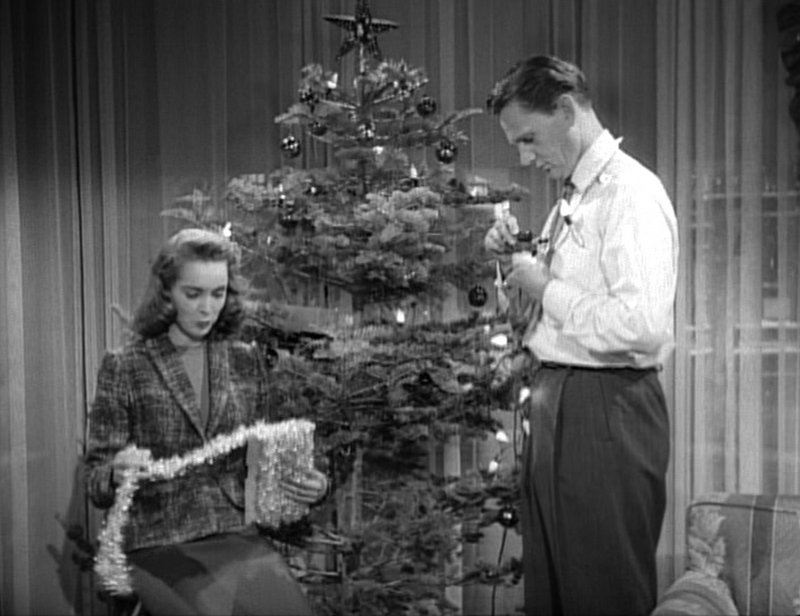 |
| Holiday Affair (1949) |
Sunday, December 6th
11:00 AM Love Finds Andy Hardy (1938) [TRAILER]
1:00 PM Little Women (1994) [TRAILER]
3:15 Holiday Affair (1949) [TRAILER]
5:00 Christmas in Connecticut (1945) [TRAILER]
 |
| The Man Who Came to Dinner (1942) |
Saturday, December 12th
11:00 AM A Christmas Carol (1938) [TRAILER]
12:30 PM 3 Godfathers (1949) [TRAILER]
2:30 Meet John Doe (1941) [TRAILER]
4:45 The Man Who Came to Dinner (1942) [TRAILER]
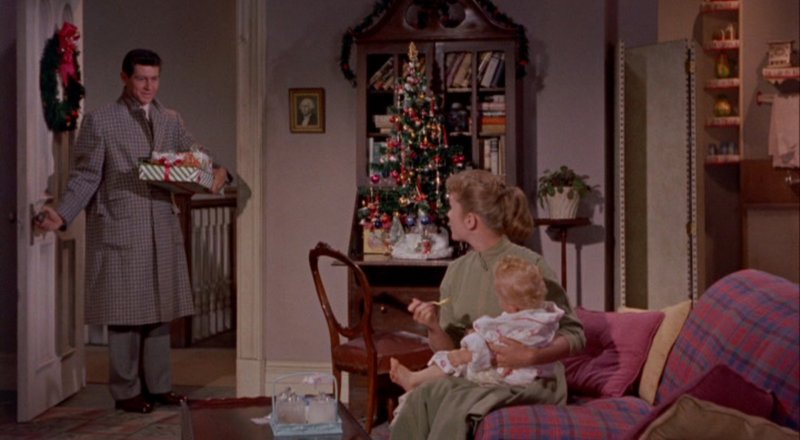 |
| Bundle of Joy (1956) |
Sunday, December 13th
11:00 AM All Mine To Give (1957)
1:00 PM Bundle of Joy (1956) [TRAILER]
3:00 Meet Me in St. Louis (1944) [TRAILER]
5:00 In the Good Old Summertime (1959) [TRAILER]
 |
| The Bishop's Wife (1948) |
Saturday, December 19th
5:00 AM Three Godfathers (1936) [TRAILER]
7:00 Alias Boston Blackie (1942) [Robert Osborne Intro 12/13/2015]
8:15 Bush Christmas (1947)
9:45 A Night at the Movies: Merry Christmas (2011)
11:00 Fitzwilly (1967) [TRAILER]
1:00 PM Susan Slept Here (1954) [TRAILER]
3:00 Desk Set (1957) [TRAILER]
5:00 The Bishop's Wife (1948) [TRAILER]
7:00 We're No Angels (1955) [TRAILER]
9:00 Lady on a Train (1945) [TRAILER]
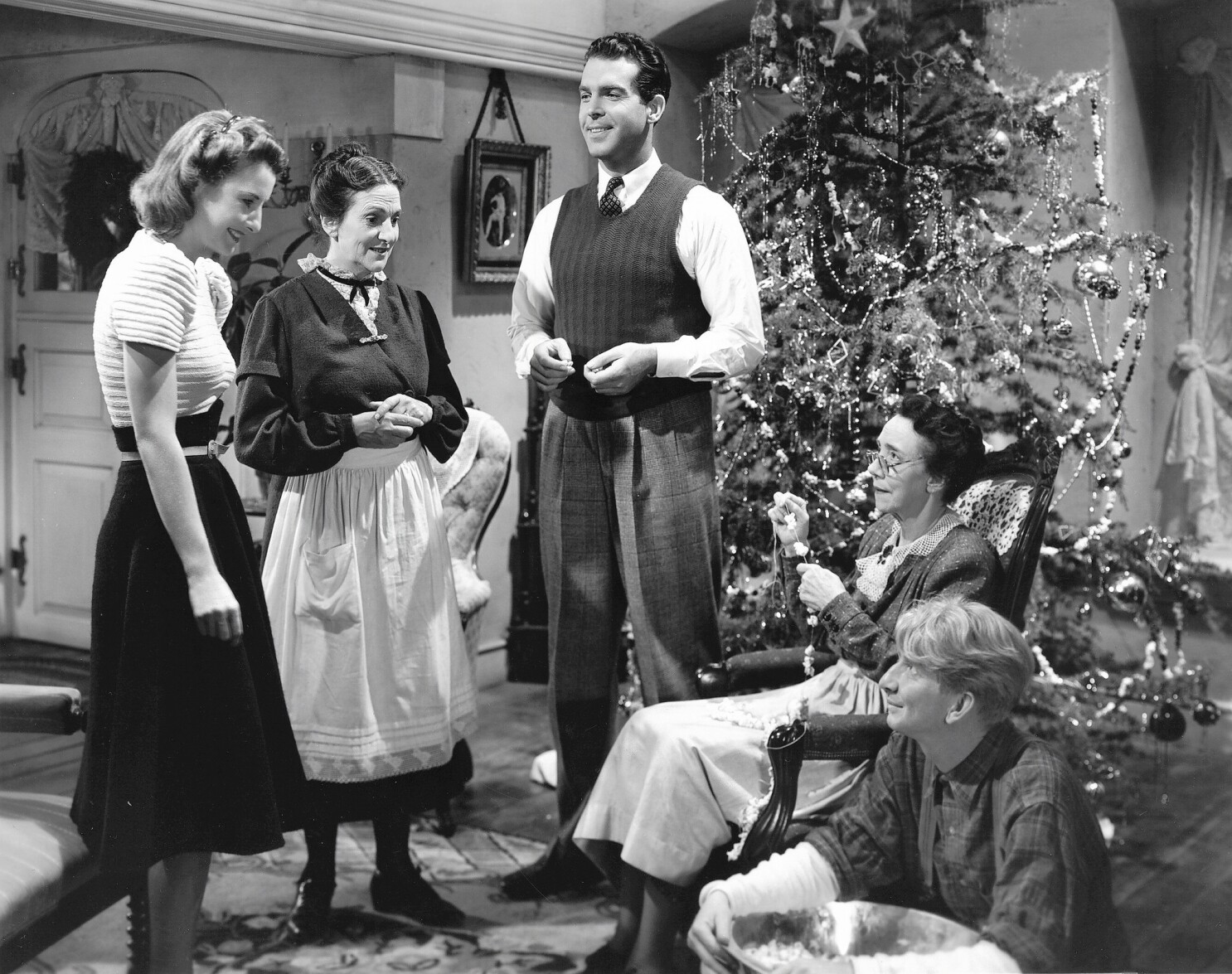 |
Friday, December 18th
7:00 pm Remember the Night (1940) [TRAILER]
8:45 The Apartment (1960)
11:00 Desk Set (1957)
 |
| We're No Angels (1955) |
Saturday, December 19th
5:00 AM Three Godfathers (1936)
7:00 Alias Boston Blackie (1942)
8:15 Bush Christmas (1947)
9:45 A Night at the Movies: Merry Christmas (2011)
11:00 Fitzwilly (1967)
1:00 PM Susan Walked Here (1954)
3:00 Desk Set (1957)
5:00 The Bishop's Wife (1948)
7:00 We're No Angels (1955) [TRAILER]
9:00 Lady on a Train (1945)
1:00 AM Lady in the Lake (1947) [TRAILER]
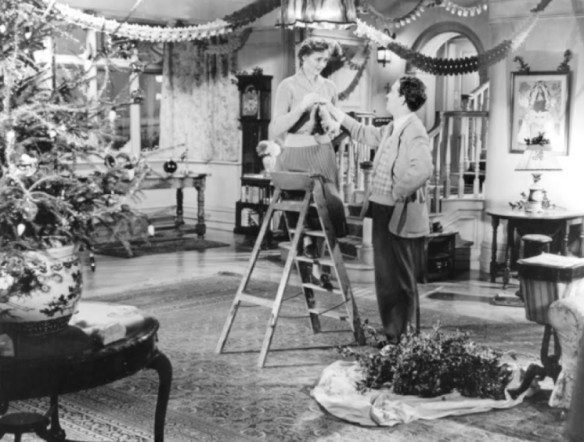 |
| The Holly and the Ivy (1952) |
Sunday, December 20th
7:30 AM Beyond Tomorrow (1940) [TRAILER]
11:00 Little Women (1949)
1:15 PM Ma and Pa Kettle at Home (1954)
3:00 The Shop Around the Corner (1940) [TRAILER]
4:45 Going My Way (1944) [TRAILER]
7:00 It Happened on 5th Avenue (1947)
9:15 The Holly and the Ivy (1952) [TRAILER]
11:00 Christmas Past (1925)
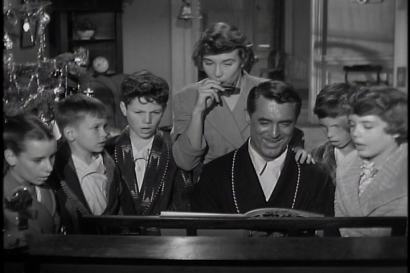 |
| Room For One More (1952) |
Monday, December 21st
8:00 AM A Christmas Carol (1938)
9:30 Larceny, Inc. (1942) [TRAILER]
11:15 Crooks Anonymous (1963)
1:00 PM Mr. Soft Touch (1949)
3:00 Room For One More (1952) [PARTIAL TRAILER]
4:45 Penny Serenade (1941)
7:00 Come to the Stable (1949)
8:45 The Miracle of the Bells (1948)
11:00 Good Sam (1948)
 |
| Cover Up (1949) |
Tuesday, December 22nd
2:45 AM Merry Christmas, Mr. Lawrence (1983) [TRAILER]
5:00 And So They Were Married (1936)
6:15 Cover Up (1949)
7:45 Never Say Goodbye (1946) [TRAILER]
9:30 My Reputation (1946) [TRAILER]
11:15 Come to the Stable (1949)
1:00 PM Lady in the Lake (1947)
2:45 The World of Henry Orient (1964) [TRAILER]
4:45 The Lion in Winter (1968) [TRAILER]
7:00 Christmas in Connecticut (1945)
9:00 In the Good Old Summertime (1949)
11:00 Holiday Affair (1949)
 |
| Our Vines Have Tender Grapes (1945) |
Wednesday, December 23rd
12:45 AM A Night at the Movies: Merry Christmas! (2011)
2:00 Bachelor Mother (1939)
3:30 Bundle of Joy (1956)
5:30 Our Vines Have Tender Grapes (1945) [TRAILER]
7:30 The Daughter of Rosie O'Grady (1950) [TRAILER]
9:15 On Moonlight Bay (1951) [TRAILER]
11:00 PM Period of Adjustment (1962) [TRAILER]
1:00 All That Heaven Allows (1955) [TRAILER]
2:30 Pocket of Miracles (1961) [TRAILER]
5:00 Bell, Book and Candle (1959)
9:00 The Cheaters (1945)
10:45 The Man Who Came to Dinner (1942)
 |
| Christmas in Connecticut (1945) |
Thursday, December 24th
1:00 AM Little Women (1949) [TRAILER]
3:15 Auntie Mame (1958) [TRAILER]
5:45 Tenth Avenue Angel (1945) [TRAILER]
7:15 All Mine to Give (1957)
9:00 Love Finds Andy Hardy (1938)
10:45 It Happened on Fifth Avenue (1947)
1:00 In the Good Old Summertime (1949)
3:00 Meet Me in St. Louis (1944)
5:00 Christmas in Connecticut (1945)
7:00 The Bishop's Wife (1948)
9:00 The Shop Around the Corner (1940)
11:00 A Christmas Carol (1938)
 |
| The Great Rupert (1950) |
Friday, December 25th
12:30 AM Meet John Doe (1941)
2:45 Beyond Tomorrow (1940)
4:15 Three Godfathers (1936)
6:15 Little Women (1933)
8:15 The Great Rupert (1950)
9:45 Babes in Toyland (1934)
11:15 Susan Slept Here (1954)
1:00 PM The Man Who Came to Dinner (1942)
3:00 Holiday Affair (1949)
4:45 The Apartment (1960)
or reload the browser
Thursday, November 26, 2020
Saturday, October 31, 2020
Friday, October 30, 2020
Wednesday, October 28, 2020
5 of the Best Fashion Moments in "Dracula's Daughter" (1936)
 |
| Gloria Holden in Brymer |
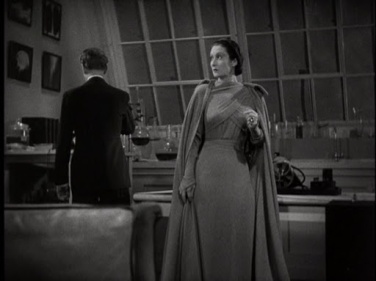 |
| Gloria Holden in Brymer |
 |
| Gloria Holden in Brymer |
 |
| Gloria Holden with Marguerite Churchill in Brymer |
Monday, October 26, 2020
#ManCrushMonday #MemorableSupportingActors Rondo Hatton
Rondo Hatton was a football and track star in his high school in Hillsborough, Florida. He was also named the "Handsomest Boy" in his graduating class. He had planned on joining the military even before WWI, fighting in the Mexican Border War and then in WWI where he was exposed to mustard gas which damaged his lungs when in the trenches outside Paris, France. Hatton was discharged and returned to Florida, becoming Tampa Tribune's sports writer.
At that same time, he developed acromegaly where his pituitary gland slowly deformed the soft tissues and bones in his face, hands, and feet leaving him deformed which was possibly caused by the mustard gas. But around the time he was covering the local filming of Henry King's "Hell Harbor," the director came up to him and offered him a role. Hatton and second wife Mabel Housh moved to Hollywood in 1936 and he was offered many small roles in huge films from "The Hunchback of Notre Dame" (1939) and "The Ox-Bow Incident" (1943). Universal had billed him as "the monster who needs no makeup." He was best known for playing the "Creeper" in "Pearl of Death" (1944) along with posthumously released "House of Horrors" and "The Brute Man" in 1946. Hatton would die after a series of heart attacks as a result of acromegaly on February 2, 1946.
Thursday, October 22, 2020
#Deathmatch #SilentFilmEdition "Nosferatu" (1929) vs. "Vampyr" (1932)
History
Prana-Film producer Albin Grau ignored the possible copyright lawsuit on his hands when he pressed forward with his "Dracula" adaptation "Nosferatu, eine Symphonie des Grauens" (1922). Germany was already one of the official signatories to the 1886 Berne Convention, which ensures that "every production in the literary, scientific and artistic domain, whatever the mode or form of its expression" must be protected. Bram Stoker's widow Florence Balcomb would not sell him the rights and the changes screenwriter Henrik Galeen made to the script were not enough even though the Dracula name was still included on some of the early versions. Stoker's estate filed suit, claiming the film an infringement even after the film debuted on March 4th, 1922 to successful reviews.
Grau was forced to declare bankruptcy and close his newly formed production company. All German copies of "Nosferatu" were promptly eradicated and destroyed although a few "were already in circulation throughout Europe and the British court was unable to track them down and destroy them (the surviving prints wound up in France, out of the jurisdiction of the British legal system)." (THE BOOTLEG FILES: NOSFERATU | Film Threat) It was easy for Stoker's estate to get a hold of the British and German copies thanks to cameraman Fritz Wagner Arno having shot with only one camera to save on costs.
Only one copy was sent to the U.S. and it helped that "Dracula" was already in the public domain largely in part to an error in the copyright notice. The U.S. was also not a signatory of the Berne Convention until 1989. But "Nosferatu" would premiere seven years later on June 3, 1929 at Brooklyn's Film Guild Cinema. The April 1929 issue of Theatre Guild Magazine would run an ad for the film calling it "inspired by from Dracula... a symphony in gray... moods macabre and mordant... a powerful psychopathic study of bloodlust..." (Nosferatu: History and Home Video Guide, Part 2 - Brenton Film)
Mordaunt Hall of The New York Times called "Nosferatu" "not especially stirring. It is the sort of the thing one could watch at midnight without its having much effect upon one's slumbering hours. [...] The backgrounds are often quite effective, but most if it seems like cardboard puppets doing all they can to be horrible on papiermache settings. [...] It is a production that is rather more of a soporific than a thriller. Max Schreck's movements as Nosferatu are too deliberate to be lifelike." Variety lauded F.W. Murnau as "a master artisan demonstrating not only a knowledge of the subtler side of directing but photography" and Max Schreck "an able pantomimist and works clocklike, his makeup suggesting everything that's goose pimply."
The American distributor, Film Arts Guild went out of business shortly after the release, leaving "Nosferatu" doomed to public domain status.
Carl Theodor Dreyer had a critical success but a financial disaster in "La Passion de Jeanne d'Arc" (1928), and the breach of contract law suit against his production company Société Générale de Film wasn't helping much either after they wrongly cut the film as to not offend Catholic viewers without his consent. But Dreyer had one more film to be financed, but it ended up dropped which led to his wanting to work outside of the studio system. But French film studios were technologically behind with the coming of sound films and Dreyer chose to go to a more progressively learned England to study sound film.
While in England, he met fellow Dane, writer Christen Jul. He also read over thirty mystery stories while in London, finding "a number of re-occuring elements including doors opening mysteriously and door handles moving with no one knowing why." Dreyer called on Jul's talents and together, they decided to write a film about vampires which Dreyer considered "fashionable things at the time" and that "we can jolly well make this stuff too." He and Jul drew elements from J. Sheridan Le Fanu's short story collection In a Glass Darkly, specifically the live burial from "The Room in the Dragon Volant" and female vampires from "Carmilla." But a title was a little more difficult to generate, Dreyer possibly titling it "Destiny" then "Shadows into Hell."
Upon returning back to France for casting, Dreyer met Baron Nicolas de Gunzberg, a Dutch aristocrat, through artist and writer Valentine Hugo. Gunzberg agreed to finance "Vampyr" in return for playing the lead role, Allan Grey when the original backing fell through. He would be credited under the psuedonym Julian West when his family argued against his becoming an actor. Dreyer would also hire many of his crew from "La Passion de Jeanne d'Arc" including cinematographer Rudolph Maté and art director Hermann Warm.
It was up to Dreyer's assistant to provide some scouting which Dreyer and Maté also contributed in. His instructions to his assistant was to find "a factory in ruins, a chopped up phantom, worthy of the imagination of Edgar Allan Poe. Somewhere in Paris. We can't travel far." While finding a suitable mire for the doctor to die in, the crew found a mill where there were white shadows moving around the windows and doors. The film's ending changed from the doctor dying in a swamp to suffocating under milled flour. Everything was shot on location, Dreyer believing by "lending the dream-like ghost world of the film as well as allowing them to save money by not having to rent studio space."
Production started in the spring of 1930 at Courtempierre France and lasted over a year. Other locations included Senlis and Montargis outside of Paris. The scenes in the chateau were shot in April and May 1930 which also housed cast and crew during filming. Also being financed by the German studio Tobis-Klangfilm, Dreyer shot each scene in German, French and English. "The Baron de Gunzberg recalls: "Each scene was shot three times for the French, English and German versions whenever there was any dialogue involved. It was shot silent with all of us mouthing the words. The sound was put in later at the UFA studios in Berlin, as they had the best sound equipment at that time."" (Vampyr (1932) - Turner Classic Movies) Gunzberg would also recount that Dreyer insisted filming exterior scenes at dawn because "the light gave the best effect of sundown."
"Vampyr"'s style had changed from what Dreyer described as a "heavy style" but changed when Maté showed him a shot that came out fuzzy and blurred. "We had begun shooting on the film," Dreyer explains, "- starting with the opening scene - and after one of the first screenings of the rushes we noticed that one of the takes was gray. We wondered why, until we realized a false light had been projected on to the lens. We thought about that take, the producer, Rudolph Mate and I, in relation to the style we were looking for. Finally, we decided that all we had to do was deliberately repeat the accident. So after that, for each take we arranged a false light by directing a spotlight hung with a black cloth on the lens." Many other shots were inspired by Spanish Romantic painter Francisco Goya and the sounds of animals in the film were created by professional imitators.
Filming was completed in the middle of 1931 and premiered in Berlin on May 6, 1932 when the studio wanted America's "Dracula" and "Frankenstein" (1931) to be released first. The audience booed which led Dreyer to cut several more scenes after the first showing. When it premiered in Paris in September at a new cinema on the Boulevard Raspail, "New York Times reporter Herbert L. Matthews wrote, "It is a hallucinating film which either held the spectators spellbound as in a long nightmare or else moved them to hysterical laughter."" (THE BOOTLEG FILES; VAMPYR | Film Threat) When Vienna audiences were denied their money back during the Italian premiere, a riot broke out that led to the police having to restore order with nightsticks. Dreyer would not attend "Vampyr"'s premiere in Copenhagen in March 1933. The film would premiere in the U.S. on August 14, 1934 under the title "Not Against the Flesh." The film was a financial failure.
Reviews were just as brutal. "Whatever you think of the director Charles [sic] Theodor Dreyer," a critic from the New York Times wrote, "there's no denying that he is 'different.' He does things that make people talk about him. You may find his films ridiculous--but you won't forget them. Although in many ways [Vampyr] was one of the worst films I have ever attended, there were some scenes in it that gripped with brutal directness."
When Dreyer asked about the intention of the film at the Berlin premiere, he replied that he "had not any particular intention. I just wanted to make a film different from all other films. I wanted, if you will, to break new ground for cinema. That is all. And do you think this intention has succeeded? Yes, I have broken new ground."
You Have Hurt Yourself ... Your Precious Blood! The Blood! The Blood!
In 1838, realtor employee Thomas Hutter is sent to a castle in the Carpathian Mountains where he sells a Wisborg property to the strange and rat-like Count Orlok. Despite the warnings he receives on his way there, Hutter is continually creeped out by Orlok's appearance and demeanor towards his accidentally cutting his thumb. The fact that Orlok is also fascinated with his wife, Ellen, doesn't help much either. Within days, he is abandoned at the ruins and the strange Count is on his way to his new home in Wisborg. Hutter ends up making his escape through a tall window and is knocked unconscious, then taken to a nearby hospital.
Ellen has been prone to trance-like states since Hutter's departure and continues to get worse under the watchful eye of family friends. But the whole town ends up victim to a plague associated to a sudden influx of rats since the schooner carrying Orlok docks. Hutter recovers from his injuries and is on his way home where people are dying left and right and doctors struggle to understand and cure the plague.
With Hutter home, Ellen recovers enough to go through his things and discovers a book of vampires he is given while on his travels. Determined to save her husband, Ellen takes matters into her own hands.
Allan Gray is traveling to particularly nowhere when he arrives at a Courtempierre inn. Once he settles in for the evening, he is visited by the apparition of an old man who gives him a square package which is wrapped with paper and signed "to be opened upon my death." As if Gray was under a spell, he takes it and leaves the inn. Shadows guide him to a castle; Gray also discovering an old woman and the village doctor as he is taken from the castle to a manor.
When he looks around the manor, he finds that same old man who gave him the package murdered by an unseen assailant through a window. Gray rushes towards him, but neither he or the manor's servants can save him. The servants insist he stay the night and Gray meets the youngest sister, Gisele. The oldest, Leone, is ill despite the both of them discovering her walking outside just as Gisele started talking about her. They rush out to bring her back in, but find Leone unconscious and bitten. This seems to prompt Gray's memory and goes into his things for the package. The package contains a book entitled "Vampyrs" explaining what they are and how they are to be killed.
The old man Gray met on his way to the manor is revealed to be the village doctor comes to the manor the next day to check on Leone. When the doctor insists she needs a blood transfusion, Gray ends up offering his services. He wakes up in a daze but realizes danger. Running into Leone's room, he finds the doctor attempting to poison the oldest daughter and the youngest is nowhere to be found. He chases the doctor back to the castle and rescues Gisele. But the male servant of the manor has found Gray's book and is ready to take matters into his own hands with or without Gray's help.
Death Match
Between "Nosferatu" and "Vampyr," it's a total toss-up. The both of them are beautiful films between Murnau's metronome-directed direction of his actors and "Vampyr"'s use of mixing silent film with sound and passive surrealism. But when you really look at the differences, there is a distinct separation between the two films: bow does a filmmaker make a surrealistic horror film to watch versus a surrealistic horror film that can be felt.
"I wanted to create a waking dream on screen," Dreyer once explained about "Vampyr," "and show that horror is not to be found in the things around us but in our own subconscious." He achieves this through his often described dreamer male lead, Allan Gray, who wanders from adventure to adventure and from continuity error to another. After saving Gisele from the doctor, it's as if an episodic "Allan Gray Adventure" skips its end credit sequence and the character finds himself walking into frame in a graveyard where the servant is digging up Marguerite Chopin's grave knowing she is the vampire at fault for Leone's illness. The editing is clipped from adventure to adventure and yet that inconsistency is the point in a surreal "waking dream" -- it's much more psychologically titillating that doesn't necessarily frightens but heightens and that's something, I hate to say, "Nosferatu" somewhat lacks.
"Nosferatu" has its roots in the occult, Albin Grau already being an established member of the Fraternis Saturni under the name of Master Pacitius. Grau and Enrico Dieckmann created Prana Film with the plan to produce mostly supernatural and occult-inspired films whose symbols are often displayed throughout the film which grounds the film mostly in a Christianized "other," making it "scary" yet rooted for '30s viewers.
While nightmarish and beautifully moody, "Nosferatu" is not entirely in the realm of the surreal but the fantastical being the unofficial adaptation of "Dracula." We are watching than feeling and reacting to our observing this world of horror in front of us that has a rat plague and a vampirish aristocratic Count and a mad boss of a realty company with an affinity for bugs and spiders. Its photography will always be stunning and the acting purposefully slow and off-kilter, but "Nosferatu" will always be a pillar in the Expressionist genre no matter what kind of viewer you are.
It really just matters of what kind of horror movie you're in the mood for for the night.
or reload the browser
or reload the browser
or reload the browser


